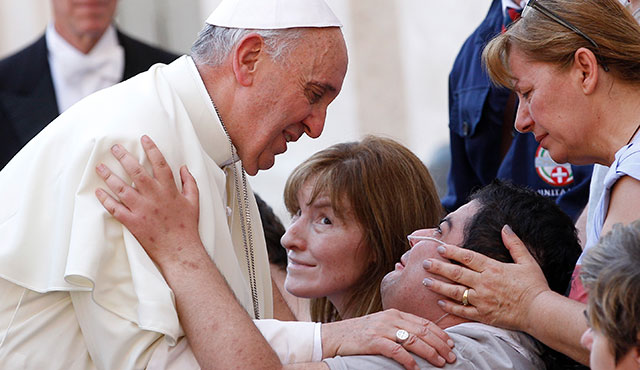“I have a dream that one day this nation will rise up and live out the true meaning of its creed: We hold these truths to be self-evident: that all men are created equal.” — Dr. Martin Luther King, Jr.
Full inclusion in Mass and the Sacraments for people with special needs is the aim of the Diocese of Orange Parish Faith Formation office and the Special Needs Advisory Circle.
These local resources operate with a key statement in mind: The Pastoral Statement of U.S. Catholic Bishops on People with Disabilities, which passed unanimously in 1978. In the document, the bishops declare that Catholics with disabilities must be able to participate fully in the celebrations and obligations of their faith and should be included “within the total fabric of society.”
There are an estimated 14 million Catholics with disabilities living in the United States, according to the National Catholic Partnership on Disability, an organization rooted in Gospel values that affirms the dignity of every person.
Indeed, welcoming diversity in all its expressions and including persons with disabilities are important goals for all Catholics. Yet, often adults do not know the best way to interact with people who are different – and children may have difficulties as well in understanding diversity and the differently abled.
In a May 30, 2017 article on Care.com, “Teaching Your Child About Peers with Special Needs,” Dr. Deborah Elbaum lists several basic ideas about disabilities and the differently abled to share with children. She notes that children with disabilities are like all children – they want friends, respect, and to be included.
Dr. Elbaum says to use clear, respectful language when talking about someone with disabilities. For a younger child, she says, keep explanations simple, such as, “She uses a wheelchair because a part of her body does not work as well as it could.”
Recognizing that differences often provoke bullying, Dr. Elbaum says parents must reinforce with their children that name-calling is always unacceptable, as it hurts people’s feelings.
Some ideas to help children understand people with disabilities include:
- A disability is only one characteristic of a person. People have many facets: likes and dislikes, strengths and challenges.
- Children can be born disabled or become disabled from an accident or illness. You can’t “catch” a disability from someone else.
- Just because someone has a physical disability (when a part or parts of the body do not work well) does not mean they necessarily have a cognitive (or thinking) disability.
- Children with disabilities can do many of the things other children do, but it might take them longer. They may need assistance or adaptive equipment to help them.
- Accommodations may be present in the classroom. For example, a teacher may wear a microphone so that a student with a hearing impairment can better hear in school.
Annette Z. Venegas-Chavez, former program assistant in the Parish Faith Formation office, says the Diocese of Orange Special Needs Advisory Circle is a “coalition of social and spiritual support within our faith community to help parishes and families with special needs grow in holiness to love and serve our Lord.”
Advisory Circle members meet four times a year and work with the faith community by offering training and support for special needs programs. The Circle has developed “Guidelines for Inclusion and Faith Formation for Persons with Special Needs” for use in parish ministries. It is available on the Circle’s website: rcbo.org/group/special-needs-advisory-circle.

